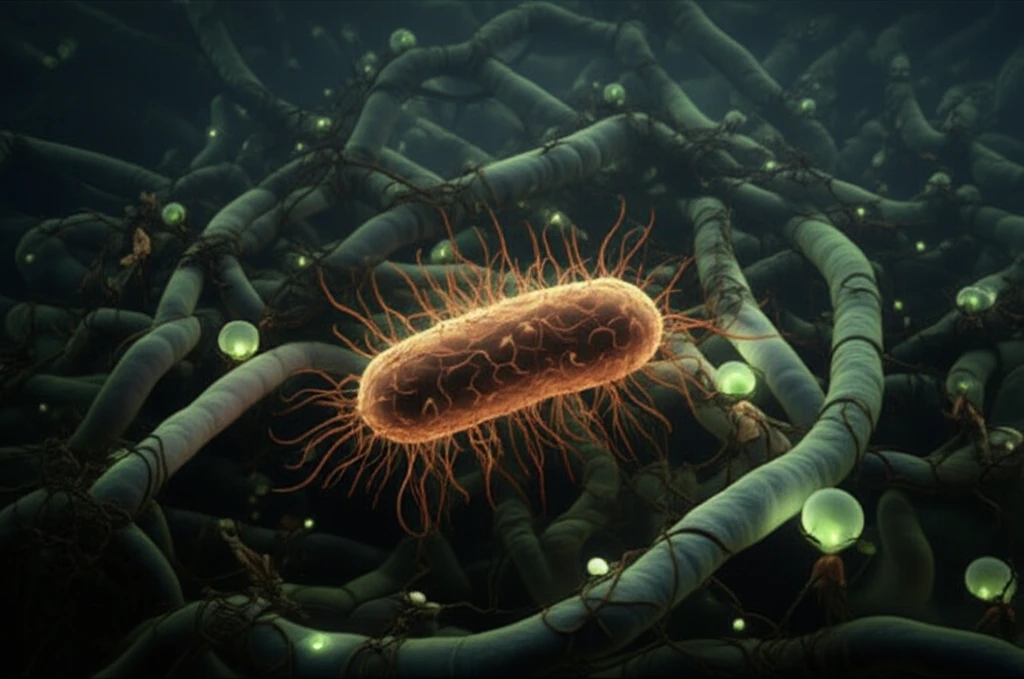
Unlocking Nature's Secrets: How Bacterial Enzymes Could Revolutionize Chemical Synthesis
"Scientists Discover a Novel Diterpene Cascade in Saccharopolyspora spinosa, Offering New Pathways for Creating Complex Molecules"
Nature has always been the ultimate chemist, capable of constructing a vast array of complex molecules with remarkable efficiency. Among these natural processes, terpene biosynthesis stands out for its astonishing structural diversity, all stemming from surprisingly simple enzymatic reactions. Terpene synthases (TSs), the key players in this process, act as evolution's combinatorial playground, generating carbon skeletons for a wide range of beneficial compounds.
Type-I TSs, a specific class of these enzymes, convert linear oligoprenyl diphosphates (OPPs) into polycyclic hydrocarbons and alcohols with multiple stereocenters. These enzymes work by abstracting diphosphate and providing a unique active site architecture that stabilizes cations, discriminates conformation, and selectively terminates the reaction cascade. This intricate process involves various cation chemistry mechanisms, including hydride migrations, proton shifts, and Wagner-Meerwein rearrangements, all culminating in complex products from a single enzymatic step.
Now, researchers have uncovered a new twist in this story, focusing on a diterpene synthase from the bacterium Saccharopolyspora spinosa. This enzyme exhibits an unusual branched isomerization mechanism, offering a fresh perspective on the synthetic capabilities of these natural catalysts. This discovery not only expands our understanding of terpene biosynthesis but also opens doors to innovative approaches in chemical synthesis.
What Makes the Spinodiene Synthase So Unique?

The soil actinomycete Saccharopolyspora spinosa is well-known for producing spinosyns, a class of polyketide natural products widely used as potent insecticides. The genome of this bacterium harbors a terpene synthase (TS), featuring conserved motifs for diphosphate binding and activation. This particular TS, dubbed spinodiene synthase (SoS), efficiently converts geranylgeranyl diphosphate (GGPP) into a mixture of diterpenes, including spinodiene A, spinodiene B, and 2,7,18-dolabellatriene.
- Initial Cyclization: GGPP undergoes a combined 1,11- and 10,14-cyclization, leading to the formation of (E,E)-3,7,18-dolabellatriene.
- Isomerization: The intermediate undergoes isomerization to form the final products, spinodiene A, spinodiene B, and 2,7,18-dolabellatriene.
- Protonation and Hydride Shift: The isomerization involves protonation and hydride shifts, resulting in unique stereochemical outcomes.
- Diels-Alder Chemistry: Spinodiene A's conjugated diene moiety allows for Diels-Alder reactions, creating new sesterterpene alcohols.
The Future of Enzyme-Driven Synthesis
The discovery of spinodiene synthase and its unique branched isomerization mechanism opens new avenues for creating complex molecules. By harnessing the power of bacterial enzymes, scientists can develop sustainable and efficient methods for producing valuable compounds. This research not only expands our understanding of terpene biosynthesis but also paves the way for innovative applications in various fields, from pharmaceuticals to materials science. As we continue to explore nature's enzymatic toolbox, we can unlock even more secrets for revolutionizing chemical synthesis and addressing global challenges.
